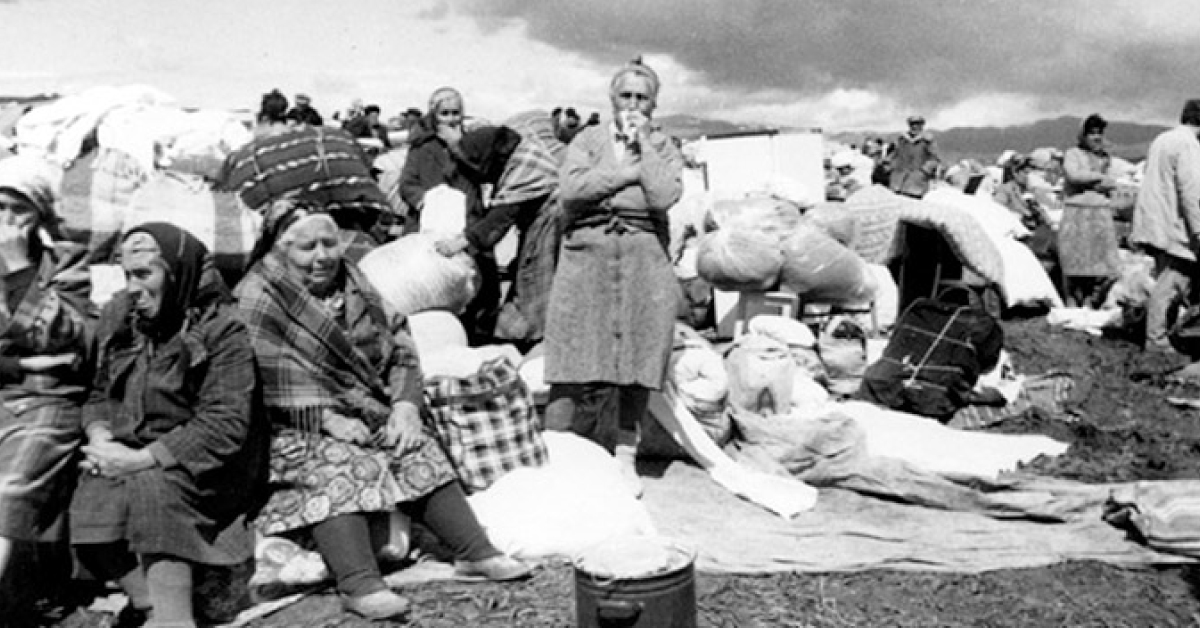2025
2025
2025-04-30

Photo by Jaromír Štětina
In late 1990 and early 1991, the situation in Artsakh worsened. The authorities of the USSR and Azerbaijan intensified pressure and acts of violence. The situation in Northern Artsakh was particularly alarming. The regions of Getabek, Tovuz, Shamkhor, and Dashkesan were depopulated.
In 1990–1991, armed self-defense was organized in the Armenian villages of the Shahumyan district, the Getashen subdistrict, and the Berdadzor subdistrict of the Shushi district, in response to the terror by Soviet armed forces, Azerbaijani militia special units (OMON), and armed militants. Shahen Meghryan assumed the self-defense of Shahumyan, Tatul Krpeyan led the self-defense of Getashen subdistrict, Manvel Sargsyan was responsible for the Nagorno-Karabakh Autonomous Region (NKAO), and Andranik Harutyunyan headed the self-defense of the Berdadzor subdistrict.
In November 1990, the investigative bodies[1] of the USSR in the Nagorno-Karabakh Autonomous Region (NKAO) obtained classified documents from the government of the Azerbaijani SSR, including a plan for the forced deportation of the Armenian population from the villages of Khanlar and Shahumyan regions. The peak of this policy was the military operation known as “Ring” (“Kol'tso”). [2]
In February 1991, a session of the Supreme Council of the Azerbaijani SSR approved the program for the deportation of the Armenian population from the republic.
On April 10 of the same year, a large high-ranking delegation composed of members of the Azerbaijani government and military officials visited Getashen and delivered an ultimatum to the Armenian residents of the villages of Getashen and Martunashen: to sell their property and leave within three days. The residents refused to comply with the demand.
Ayaz Mutalibov, first secretary of the Central Committee of the Communist Party of Azerbaijan, called for the forced deportation of the Armenians of the Shahumyan district and the Getashen subdistrict.
The “Ring” operation led Colonel General Boris Gromov, First Deputy Minister of Internal Affairs of the USSR.
On April 15, units of the USSR Ministry of Internal Affairs' internal troops withdrew from the Getashen subdistrict and Martunashen enabling the Azerbaijani OMON punitive squads, operating under the guise of police, the freedom to act without restraint.
On April 21, Azerbaijani OMON units attempted to invade Getashen and Martunashen, but Armenian self-defense forces resisted, inflicted losses, and forced to retreat. Thereafter, units of the USSR Ministry of Internal Affairs’ internal troops and the Soviet army directly led the operation. [3]
On April 23, Levon Ter-Petrosyan, the President of the Armenian SSR Supreme Council, sent a letter to the Soviet leadership, proposing urgent measures to ensure the protection and security guarantees for the Armenian population.
From April 26, Soviet troops and Azerbaijani OMON units began to prepare for the siege of Getashen.
On the night of April 29–30, Azerbaijani special forces, with the support of units from the Soviet armed forces and the Ministry of Internal Affairs' internal troops, launched the Ring military operation. A total of 207 combat vehicles (including around 100 tanks), approximately 6,000 personnel, and 6 helicopters were involved in the operation. [4]
On April 30, the enemy invaded Martunashen. The village's self-defense forces, the Arabo squad led by Simon Achikgyozyan and the Proshyan squad led by Karot Mkrtchyan, engaged in an unequal battle. The village was mercilessly shelled, and Martunashen, with around 200 households, was completely destroyed. The Soviet army command proposed to halt the shelling on the condition that Getashen and Martunashen be fully emptied of Armenians within 48 hours; otherwise, the attack would continue.
Tatul Krpeyan, Simon Achikgyozyan, Martiros Shahnazaryan, Artur Karapetyan, Valeri Nazaryan, Zarzand (Hrach) Danielyan, and others heroically fell in fierce battles.
The Azerbaijani population of neighboring settlements watched the military operation in order to loot Armenian property if possible.
The mass deportation of the Armenian civilian population from the villages of Getashen and Martunashen began on May 4 and continued until May 8. On May 7, between 3,000 and 3,500 people were transported by military helicopters to Stepanakert, and from there to various regions of Armenia. All of this occured with the consent of the Soviet military.
During the tragic days of the terror “Ring” operation, progressive intellectuals around the world, in the USSR, Western Europe, and the United States, as well as numerous Diaspora Armenian organizations, public and political groups, raised their voices in protest, expressing their solidarity and condolences over this unprecedented state crime.
The implementation of the “Ring” military operation was a political decision. During the operation, 41 people were killed, 70 were wounded, and 335 were taken hostage. By August, оther 24 Armenian villages were subjected to deportation, and more than 100 Armenians were killed. [5] As a result of the “Ring” operation, the Azerbaijani authorities succeeded in ethnically cleansing and annexing part of Northern Artsakh to Azerbaijan.
The political and military leaderships of the USSR and the Azerbaijani SSR are responsible for the crimes committed during the “Ring” operation. This operation was, in essence, a Soviet-Azerbaijani agreement aimed at forcibly displacing the Armenian population from their homeland, terrorizing the Armenians of Artsakh in order to force them to abandon their fair demands and to facilitate ethnic cleansing.
[1] In 1990–1991, the head of the investigative-operational special group of the USSR Ministry of Internal Affairs in the NKAO was Viktor Krivopuskov, who wrote about the events that took place during that period. Кривопусков В., Мятежный Карабах. Из дневника офицера МВД СССР, Издание второе, дополненное, Москва, Голос-пресс, 2007 (Rebellious Karabakh: From the Diary of an Officer of the USSR Ministry of Internal Affairs), Second Edition, Moscow, Golos-Press, 2007.)
[2] Barseghyan-Krpeyan I., Tatul Krpeyan: The Self-Defense of the Getashen Sub-District in Northern Artsakh, Yerevan, 2016.
[3] See L. Melik-Shahnazaryan, (War Crimes of Azerbaijan Against the Civilian Population of the Nagorno-Karabakh Republic), Yerevan, 1997, p. 20.
[4] Emelyanenko, Vl., "I testify: There was a massacre in Getashen", Moskovskye Novosti, May 12, 1991.
[5] Golos Armenii, April 30, 2005.